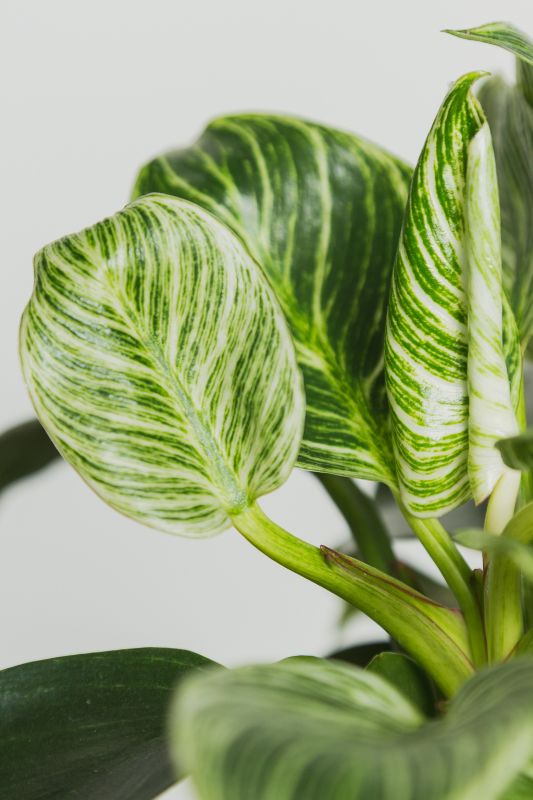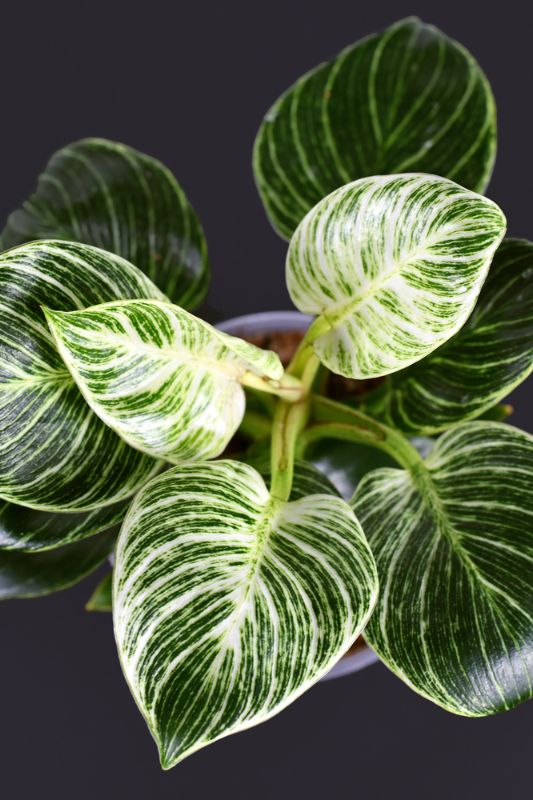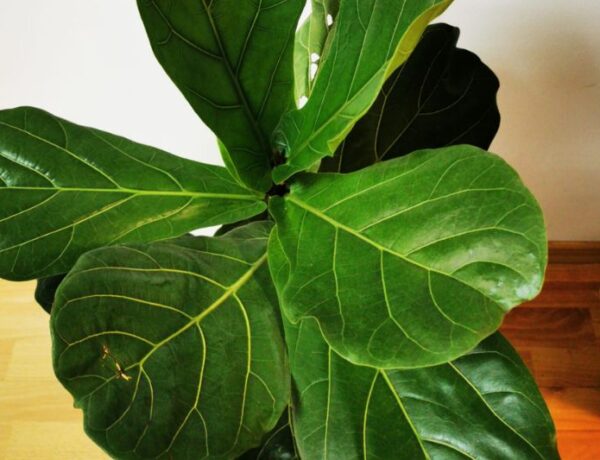Philodendron Birkin has quite the interesting story, as it spontaneously popped up in the gardening world not so long ago thanks to a Philodendron ‘Rojo Congo’ mutation. Due to the rare and unstable nature of the mutation (chimeric variegation), Philodendron Birkin can’t be found in the wild, but it’s cultivated for its beautifully variegated leaves.
When it comes to appearances, Philodendron Birkin comes with dark-green leaves that feature creamish, white pinstripes. And since its variegation is unpredictable, each plant is unique. However, unstable genetics also mean that the plant can change color and appearances if proper growing requirements are not met.
And that’s exactly why we wrote this article, to help you provide for your Philodendron Birkin so it can mature into the remarkable plant it is. Alongside these lines you’ll find information on its care requirements, common issues, pests, and also tips on what to do if you notice signs of reverse variegation.
Table of Contents
1. General information & Taxonomy
| Scientific name: | Philodendron “Birkin” |
| Common names: | Philodendron ‘White Wave’, Philodendron ‘White measure’ |
| Native to: | Not found in the wild, originated from tropical rainforests of Central and South America |
| Toxicity: | Toxic to both pets and humans |
| Mature size: | Up to 3 feet (91 cm) tall |
| Category: | Tropical houseplant |
| Growth Rate: | Moderate |
| Hardiness: | Not frost-tolerant |


2. Philodendron Birkin Care & Growing Requirements
» Watering
Philodendron Birkin is quite easy to care for and can tolerate drought better than overwatering. As a rule of thumb, water your Birkin when the soil has dried up almost completely.
» Light
Birkin thrives in bright, indirect light. Low light conditions will negatively impact its variegation, while direct sunlight will scorch the leaves and dry out the plant.
And since it needs a lot of light to maintain its white stripes (around 12 hours per day), you might have to use a grow light during the cold season.
» Soil
Well-draining soil that keeps moisture in and offers proper air circulation to the plant’s roots is ideal for your Birkin philodendron.
You can either purchase a mix specifically created for Aroids or create your own by combining regular potting soil with perlite (helps the soil dry out between waterings) and orchid bark or peat moss (retains moisture).
» Temperature
Philodendron Birkin thrives in warm environments, the ideal temperature for proper growth ranging between 65°F to 85°F (18°C – 29°C).
» Humidity
High humidity levels of around 60-80% are ideal for a Philodendron Birkin. Don’t stress if you can’t meet them, as it’s also relatively forgiving if the air is less humid.
» Fertilizer
Feed the plant every 6-8 weeks during the growing season with a balanced, liquid fertilizer diluted to half the recommended strength.
3. Philodendron Birkin Maintenance and Propagation
» Repotting
Philodendron Birkin typically needs repotting every 2-3 years, but you may need to do it sooner if you notice signs like slowed growth or water pooling on the surface. These are signs that the plant has outgrown its current container and is struggling for space and nutrients.
Pick a new pot that is 2-3 inches larger in diameter than the existing one. Make sure it has good drainage holes. Prepare a soil mix that includes peat moss, perlite, and a bit of organic matter. Gently remove the plant from the old container, shake off excess soil from the roots, and place it in the new pot. Fill in with fresh soil and water lightly.
» Pruning
Pruning is generally done to remove dead or yellow leaves and to trim back any overgrown vines. The best time to prune is during the growing season, which is usually spring or early summer for the Philodendron Birkin.
» Propagation
Spring and summer are the best times to propagate your Philodendron Birkin as the warmer temperatures and higher humidity support faster root and shoot growth.
- Stem Cuttings
- Cut a 4-6 inch stem section just below a node, making sure there are at least 2-3 leaves present.
- You can either place it in water or directly into a potting mix.
- If using water, change it every few days and wait for roots to appear. Once the roots are 1-2 inches long, plant the cutting in soil.
- If placing directly in soil, keep the soil moist but not waterlogged.
- Place the cutting in a warm, bright spot, but out of direct sunlight until it establishes roots.
- Division
- This method is best when you’re repotting your Birkin.
- Carefully remove the plant from its pot and gently separate a section of the plant, ensuring it has roots and leaves attached.
- Replant this division in a new pot with fresh, well-draining soil.
4. Common issues
» Reverse Variegation
If you notice that the variegation on your Birkin is reverting to a solid color, it could be a sign of insufficient light. Variegation is often maintained better in higher light conditions. Move the plant to a spot with more, but indirect, light to help maintain its striking variegation.
» Leaves Turning White
White leaves are often an indication of sunburn. If your Philodendron Birkin is exposed to direct sunlight for extended periods, the intense light can bleach the leaves, leading to a whitish appearance. Move the plant to a spot where it will receive bright but indirect light to prevent this issue.
» Yellow Leaves
Yellow leaves are most often a sign of overwatering, but they can also indicate inadequate fertilization or too much direct sunlight. Make sure your watering schedule aligns with the plant’s needs and consider reducing sun exposure or fertilizer application if necessary.
» Brown Leaves
Brown leaves typically indicate low humidity or possibly underwatering. To remedy this, you can mist the leaves or use a humidity tray to increase moisture levels. If underwatering is the issue, adjust your watering schedule.
» Root rot
This condition is generally caused by overwatering and poor drainage. You’ll need to repot the plant in fresh, well-draining soil and possibly treat with a fungicide to resolve this issue.
5. Philodendron Birkin Diseases & Pests
Spider mites, mealybugs, and aphids are common pests for the Philodendron Birkin. Neem oil or insecticidal soap can be effective treatments. Fungal diseases can also occur but are less common. Ensure good airflow and avoid waterlogged conditions to prevent diseases.
Conclusion
Philodendron Birkin is an exquisite addition to any indoor plant collection. With its eye-catching striped leaves and moderate care requirements, it’s not hard to see why this plant has become so popular.
By following this guide, you can ensure your Philodendron Birkin not only survives but thrives, bringing a touch of tropical splendor to your indoor space. And don’t stop at Birkin – make sure to also check our list of Philodendron varieties for more inspiration!






No Comments